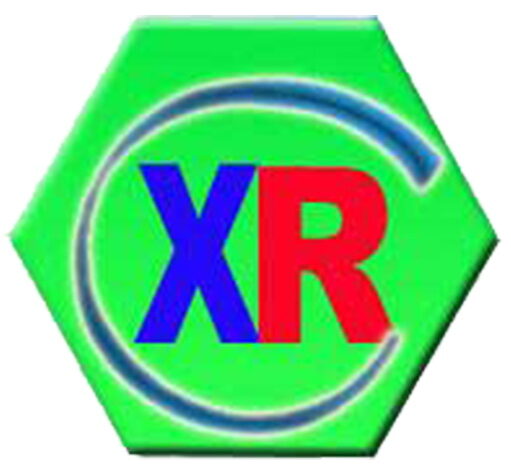The outstanding advantage of external medicine is that the medicine does not need to pass through the blood circulation and directly acts on the affected part of the skin disease, which reduces the drug damage to the liver and kidney caused by the internal medicine. The topical glucocorticoids are important dermatological external drugs, which is what we usually call hormone drugs. This type of drug has the characteristics of high efficiency and safety, and is the first-line treatment drug for many skin diseases, but there are also problems of “abuse” and “fear” in clinical practice. External application of this type of drugs can reduce capillary permeability, reduce exudation and cell infiltration, and have anti-inflammatory, anti-allergic, immunosuppressive, and anti-proliferative effects. Widely used in dermatology.
Classification of hormonal topical medicines
Commonly used topical glucocorticoids in the United States are divided into 7 grades according to their potency, including: grade 1 (super potency) – such as 0.05% clobetasol cream; grade 2 (high potency) – such as 0.1% mometasone furoate Ointment, 0.05% fluocinolone acetonide cream; grade 3 (strong) – such as 0.005% fluticasone propionate ointment; grade 4 (moderately potent) – 0.1% mometasone furoate cream; grade 5 (weak potency) – Such as 0.1% hydrocortisone butyrate ointment; Grade 6 (weak effect) – such as 0.05% desonide cream; Grade 7 (least effect) – such as hydrocortisone cream.
According to the consensus of dermatological experts in my country, according to skin vasoconstriction test and other methods, glucocorticoid ointments are divided into four categories: super-strong, strong, moderate and weak according to the intensity of action.
1. Super-potent hormones are suitable for severe and hypertrophic skin lesions. Generally, the weekly medication should not exceed 50 g; continuous medication should not exceed 2 to 3 weeks; try not to be used for children < 12 years old; should not be used for a long time in a large area; Use on pleats. Commonly used super-potent hormones include 0.05% clobetasol propionate gel, ointment, cream and foam, 0.05% diflurasone acetate ointment and 0.1% fluocinolone ointment.
2. Strong hormones are also suitable for severe and hypertrophic skin lesions. Usage attention is the same as super hormones, such as 0.1% harcinide cream, ointment and solution, 0.1% amcinonide ointment, 0.05% betamethasone dipropionate gel and ointment, 0.05% clobetasol propionate solution ( scalp preparation), 0.025% beclomethasone propionate ointment, 0.25% desoxymetasone ointment and cream, 0.05% halometasone cream, 0.05% betamethasone dipropionate cream or ointment, 0.1% betamethasone valerate Metasone cream, 0.05% fluocinolone acetonide ointment, cream or gel and solution, 0.1% mometasone furoate ointment, 0.005% fluticasone propionate ointment, 0.1% triamcinolone acetonide ointment, 0.5% triamcinolone acetonide cream, etc. Some medicines still use “cream” as the attribute of the dosage form.
3. Medium-acting hormones are suitable for mild to moderate skin lesions, and can be used continuously for 4 to 6 weeks; children < 12 years old should be used continuously for no more than 2 weeks; they should not be used for a long time in a large area. Commonly used intermediate-acting hormones are 0.1% mometasone furoate cream and lotion, 0.1% hydrocortisone butyrate ointment, cream and lotion, 0.05% fluticasone propionate cream, 0.1% triamcinolone acetonide cream and ointment , lotion, 0.12% betamethasone valerate foam, 0.025% fluocinolone ointment and cream, 0.2% hydrocortisone valerate cream, 0.05% betamethasone dipropionate lotion, 0.1% betamethasone valerate Metasone cream and lotion, 0.05% clobetasone butyrate ointment, etc.
4. Weak hormones are suitable for mild and moderate skin lesions (including children’s skin diseases, face and skin tender parts). It can be used in a large area for a short time, and can be used for a long time when necessary. Commonly used weak hormones are 0.05% desonide ointment, cream, gel, foam and lotion, 0.1% betamethasone valerate lotion, 0.01% fluocinolone ointment and 0.05% fluocinolone solution, 0.025% Anaide cream and water, as well as various topical formulations of hydrocortisone, prednisone and dexamethasone, such as 0.5% hydroprednisone acetate ointment, 0.05% dexamethasone acetate ointment, 0.025% hydrogen fluoride acetate Cortisone ointment, etc.
The chemical structure of a hormone is the main factor that determines the intensity of its action, but the concentration and dosage form also have a great influence on it. Certain ingredients added to the compound, such as the penetration enhancer azone or the keratolytic salicylic acid, also increase the strength of the hormone. In addition, the grading of the intensity of action of hormones is not necessarily parallel to the clinical efficacy. For example, desonide grading is a weak hormone, but its clinical efficacy and effect are comparable to some intermediate-acting hormones.
Misunderstandings of external use of hormones
Although hormone ointment has a good therapeutic effect on many skin diseases, it only treats the symptoms and not the root cause, and it is not suitable for all skin diseases. Therefore, topical corticosteroids should not be used indiscriminately, and it is best to use them under the guidance of a dermatologist. Many patients do not understand this, and the abuse of hormone ointments will often backfire and aggravate the condition. In addition, some drug manufacturers overemphasize the efficacy, so that consumers ignore its side effects, forming many misunderstandings in the concept.
Mistake 1:
Hormone ointment is a panacea for skin diseases. Because hormones are immunosuppressive drugs that can induce or aggravate infections, they are not suitable for viral, bacterial, and fungal skin diseases. For example, for skin diseases such as herpes simplex, skin tuberculosis, acne, folliculitis, tinea pedis, tinea corporis and tinea cruris, hormone ointment cannot be used, otherwise it will only aggravate the condition and delay treatment.
Mistake 2:
Hormonal ointments can be used for a long time. Long-term use of hormonal ointment in large quantities may cause various degrees of skin atrophy, thinning, telangiectasia, skin flushing or petechiae, ecchymosis, dry skin, blackening or ichthyosis-like changes, and hair loss, Hairy, hormonal acne, etc. Long-term use of a large amount of topical hormone ointment can cause systemic side effects through skin absorption. As a result, many people suffer from osteoporosis and other diseases, and even in severe cases, spontaneous fractures occur. Long-term use of corticosteroids can also induce or aggravate infection, making the infection spread and worsen. Some patients therefore induce gastric and duodenal ulcers, leading to ulcer bleeding and perforation. There are also patients with induced glaucoma, cataracts and so on.
Mistake three:
Children and the elderly can use steroid creams. Infants and children have a relatively large body surface area and are therefore more sensitive to hormones than adults. Therefore, infants and children should reduce the amount of drugs as much as possible, and only use low-efficiency or hormone-free ointments. Elderly skin disease patients with chronic diseases should use hormone ointment with caution, especially in patients with hypertension, diabetes, heart failure, epilepsy and mental illness, especially those with excessive use of these drugs should not be used.
Mistake 4:
Stop the medication as soon as the rash subsides. Patients who use corticosteroids for external use for a long time may develop habitual dependence or addiction, and the drug cannot be suddenly stopped after long-term use. After prolonged use of corticosteroid ointment, the normal function of the adrenal cortex of the body is inhibited, and once the drug is suddenly stopped, the disease may be aggravated due to insufficient secretion of the body’s hormones. Therefore, after long-term use of corticosteroid ointment, if it is necessary to stop the drug, the dosage should be gradually reduced until the drug is completely stopped.
Mistake five:
You can apply hormones on your face as you like. Hormone ointment has made the facial skin of many ladies with red rashes smooth, so they think that hormone ointment can also be used for skin care, and apply it to the face every day. As everyone knows, such as long-term use of ointment containing hormones, not only damage the appearance, but also accelerate skin aging. Therefore, do not use hormone-containing ointments indiscriminately, so as not to damage your appearance. In addition, when common skin diseases such as seborrheic dermatitis, rosacea, and acne appear on the face, some patients apply hormone ointments without seeking medical attention. Initially, the disease was temporarily masked due to the anti-inflammatory and immunosuppressive effects of hormones. Once the drug is stopped, the condition will quickly worsen, and even a vicious circle of worsening and worsening will be formed, forming the so-called “hormone dermatitis”.
Mistake 6:
Pregnant women cannot take orally or inject hormones, but they can apply hormones. Hormone ointment is contraindicated in early pregnancy. Pregnant women often have a variety of skin diseases, such as herpes gestationis, prurigo of pregnancy, pruritic urticaria of pregnancy, etc. The course of the disease can last for several months, and the disease can be relieved on its own after childbirth. Pregnant women can also choose oral and topical medium-acting corticosteroids as appropriate under the guidance of doctors after delivery, but long-term large-scale medication should be avoided.
Hormone ointment cannot be used or abused, but it does not mean that it cannot be used.
A survey of 200 patients with atopic eczema in dermatology outpatient clinics in the United Kingdom showed that 72.5% of the patients were afraid to use topical glucocorticoids because of fear of adverse drug reactions, 24% did not use them according to doctor’s orders, and 9.5% of patients were worried about drugs Systemic absorption will affect growth and development. In our country, we often encounter patients who “talk about hormone discoloration”, which leads to the so-called “hormone phobia”, which reduces compliance and affects the treatment effect. In order to achieve clinical therapeutic effect and ensure its safety, clinical indications and usage and dosage should be strictly controlled.
Fingertip units are a simple, effective way to guide patients in estimating topical dosages. Under normal circumstances, high-efficiency corticosteroids can be used first at the beginning of treatment, such as dexamethasone, betamethasone, triamcinolone, and fucose, etc. After the condition improves, low-efficiency corticosteroids can be used. Such as hydrocortisone and so on. Fingertip unit refers to the length of ointment or cream extruded from a 5 mm diameter orifice from the distal knuckle of the patient’s index finger to the fingertip. The fingertip unit can be used to calculate the total amount of medication required for skin lesions such as the face and neck. One fingertip unit (approximately 500 mg) is used for two palmar-sized lesions in adults, regardless of patient size. Correct use of appropriate doses can also effectively prevent adverse reactions.
Although hormonal drugs also have irreplaceable effects of other drugs in the treatment of acute and severe diseases, attention should be paid to prevent drug-induced dermatitis caused by irrational use of hormone topical ointment, which will later become severe atrophy, especially the formation of dependence on hormones Later, the requirements for hormones are also high, and they are becoming less and less sensitive. As a result, more doses are used each time, forming a vicious circle. Therefore, it is recommended that patients with skin diseases must not use hormone topical drugs at will. At present, there are many hormonal ointments on the market. When applying, specific problems should be analyzed under the guidance of doctors, and topical glucocorticoids should be used correctly to the maximum extent, so as to improve the curative effect, reduce treatment failure, and prevent the occurrence of adverse reactions.


